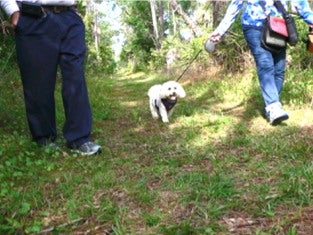Search Posts
Recent Posts
- Rhode Island Weather for May 31, 2025 – Jack Donnelly May 31, 2025
- Burn with Kearns: Fix Your Foundation: Core, Mobility & Joint Health – Kevin Kearns May 31, 2025
- In the News… quick recap of the week’s news (5.31.25) May 31, 2025
- Business Beat: Navigant CU receives prestigious Community Impact Award from NEACH May 31, 2025
- To Do in RI: Taste of Rhode Island. Food, libations, entertainment, auction for Matunuck Oyster Bar May 31, 2025
Categories
Subscribe!
Thanks for subscribing! Please check your email for further instructions.

Project ITCH – take the 10-minute survey to help URI learn what works in tick control
Residents are asked to take online survey, signup for free backyard evaluation
The Centers for Disease Control and Prevention estimates there are about 500,000 new cases of Lyme disease a year. That’s just one of the serious health risks posed by ticks. But for many people, what works best in their own backyards to control ticks is probably guesswork.
The New England Center of Excellence in Vector-Borne Disease wants to clear up the confusion—with the public’s help. The federally designated Center, a partnership of seven regional colleges and universities including the University of Rhode Island, has launched Project ITCH (Is Tick Control Helping?) with the aim of determining best practices for residential tick control—in each New England state—so residents can protect themselves, their families and their pets.
The project includes an online survey asking residents about their practices in preventing tick exposure and tick bites. Participants can sign up to let researchers know they would be interested in having a property visit and a free evaluation of tick (and mosquito) conditions on their property, as well.
“The goal of this project is to inform the public and officials at all levels about what are the most effective tick control measures and to increase people’s tick literacy,” said URI tick expert Tom Mather, who, with URI colleague and entomologist Jannelle Couret, is leading the project in Rhode Island.
“If people are paying for residential tick control, who wouldn’t want to know if it’s working? We know from other studies that some measures are more effective than others but there’s a lack of good information on what works. That’s why a controlled study of what people are choosing to control ticks around their homes really needs to be done.”
The project is one of the first for the New England Center of Excellence, which was launched in 2022 with a $10 million, five-year grant from the CDC. Headed by the University of Massachusetts Amherst, the partners are the universities of Rhode Island, New Hampshire and Maine, along with Northern Vermont University, Western Connecticut State University and Dartmouth College.
“One of the main goals of the center is to optimize tick protection,” said Mather, director of URI’s Center for Vector-Borne Disease and its TickEncounter Resource Center. “Residential control is one of those things that is always said to be helpful in protecting people around their own homes. But it’s a Wild West show out there in terms of what people are doing. It would be fine if everything worked equally, but they don’t. So, we really want to corral this Wild West show and try to get people to focus on those things that work.”
Stephen Rich, executive director of the center, says the seven regional schools are coordinating the project in their states, evaluating tick controls for specific regional needs – such as differing landscapes and residents’ knowledge, attitudes and actions. In each state, teams will include undergraduate and graduate students at each institution to train the next generation of public health entomologists, Rich said.
“The center is well-positioned to conduct regionally coordinated and comprehensive operational research programs that would not otherwise be practical or even possible,” said Rich, professor of microbiology at UMass Amherst. “We know ticks are expanding their range and with that comes the spread of tick-borne illnesses. But we also know the ecology of ticks and the approaches to controlling them will vary across New England.”
The survey is being conducted this spring with visits continuing during the next four years, said Mather, who will conduct many of the visits in Southern Rhode Island.
The survey, which takes about 10 minutes, asks residents about the area around their home, outside activities they take part in, their experience with tick and mosquito-borne diseases, tick and mosquito control measures they use, and if they would like to take part in a free on-site assessment.
The home visits will be held in June, the peak season for tiny nymphal blacklegged ticks. Blacklegged ticks, or deer ticks, can carry the germs that cause Lyme disease and others, such as Babesiosis, Anaplasmosis, and Powassan. Researchers will make backyard visits to check for ticks – all species known for the area – and they will test those ticks for any pathogens. Also, investigators will try to recruit neighbors during the visits to compare treated and untreated yards in the neighborhood.
“Tick populations vary a ton in New England but they can vary even in a community,” Mather said. “I can find places in South Kingstown where the risk isn’t great, but I also can find places where the risk is exceptional. Some of these can even be in the same neighborhood. It really depends on very local conditions, animal movement patterns and the conditions in the backyard.”
To take the survey, go here: SURVEY
POP!!
That’s just your dream-bubble bursting. Sorry. Yes, Spring is a great time for people and pets to get outside; nature and exercise have a way of calming anxious minds and hearts. But Spring brings … TICKS!! In particular, first to come are the left-over adult-stage blacklegged ticks from the Fall and that’s the tick that gives people Lyme disease and other diseases, too, including babesiosis, anaplasmosis, and a few rare but more serious infections. And they’ll be reinforced by lone star ticks, American dog ticks, Gulf Coast ticks, tiny nymph-stage blacklegged ticks…ticks, Ticks, TICKS!
We’ve got a few easy things we hope you’ll make a part of your Spring tick prevention plan, so you’re ready to beat back the ticks, and keep them from biting you and your pet.

Make tucking in pants stylish
I don’t think anyone has ever really liked the look or feel of cramming pant cuffs into socks. A recent TickEncounter tick prevention behaviors survey revealed barely a quarter of respondents acknowledged they always or often tuck their pants into their socks when venturing into potential tick habitat. But now, there’s an easy and even fashionable way to tuck and keep ticks on the outside of your clothing, especially for women and girls. Think leggings! There’s no real room for a tick to crawl under the resistance of tightly fitted clothing. Ticks generally give up at the least resistance of any clothing restriction and just bite where they’re stopped. And the lack of bulk means there’s a smoother, more comfortable overlay of the socks on the pant cuff. Pair with some fun socks, and your tick prevention is looking…really good! One more thing, while you’re tucking, it’s a good idea to tuck your shirttail in, too. Those ticks crawling up the outsides of your tucked pants can quickly crawl under an un-tucked shirt.

Spray shoes with permethrin
We’ve been fans of treating shoes with long-lasting tick repellent for, well, a long time. TickEncounter testing consistently shows that shoes treated with repellents containing the active ingredient permethrin remain blacklegged tick killers for at least a month with normal wear. But it’s super important to 1) use repellents containing permethrin and not rely on other active ingredients; also 2) when applying the spray, be sure that shoes look thoroughly wetted. It’s common for people to think that a little spritz, like with hair spray, will do the job, but that’s just not true—at least not to give month-long protection. Always let the shoes dry completely before wearing, and always follow the safety instructions on the can or bottle.

Protect pets with quick tick knock-down products
We know that pet owners definitely intend to keep their pets free of ticks but many people feel like they aren’t sure of the best way to protect their pets…or when to start. There are many different products on the market today for protecting pets from tick-transmitted diseases. Spot-ons, collars, and chew tablets are the most popular, but some kill ticks on contact while others only work once the tick bites your pet. Loose and wandering ticks brought into the house by out & in pets can put others in the household at risk which, in our thinking, favors use of kills-before-biting products. But the most important guidance we can offer is that whichever tick prevention product is selected, be sure it is used vigilantly with no gaps in protection. Dr. Susan Little, a national expert in veterinary parasitology at the Center for Veterinary Health Sciences at Oklahoma State University recommends that routine application of tick control products by the calendar – every month, or even more often at certain times of the year and if the label allows – is needed to protect dogs and cats from ticks and the diseases they transmit. Check out our interview with Dr. Little, as well as other helpful resources to protect your pet, including a prevention product comparison chart.

Stay in the middle of trails
While humans may learn on their own how to walk when they’re about 14 months old, it takes a public health entomologist to offer guidance on how best to walk on a trail to avoid ticks. One way to think about trails is that they are a pathway deeper into tick habitat than, say, your driveway. Tick drags (the tool that most entomologists use to sample ticks) have shown that more host-seeking ticks are hanging out along the sides of trails than in the center. Nymph- and larval-stage ticks will more commonly be found in the leaf litter that accumulates on the sides of trails than in the middle, and adult-stage ticks are commonly waiting shin-to-knee high on tall grasses and other low vegetation for a host to pass by. We’re not saying there are no ticks in the middle of trails, just typically far fewer. We know people are getting outside more starting in spring and may end up on trails they’re less familiar with. By hiking in the middle of any path, you’re less likely to get lost, damage plants, cause erosion, run into poison ivy, or pick up ticks.

Do a tick check daily
A lot of people say they do them, but we wonder what your tick check regime really looks like? Over 75% of respondents in a TickEncounter tick prevention survey reported they do a tick check always or most of the time after coming inside after being in tick habitat. We started wondering if people really know what tick habitat looks like. Ticks that transmit disease are increasingly being found in places they’ve never been before. And even more than perhaps not realizing when you’re at risk for tick encounters is that when doing a tick check, do you really know where to look and what to look for? (there’s a TickEncounter learning kit for that!). Data from the TickSpotters crowdsourced tick surveillance program indicates that just over 25% of the ticks that people found and reported were attached and feeding for longer than 2.5 days making them a higher risk for transmitting germs if the tick was infected. Another 10% were attached between 1.5 and 2.5 days giving them a moderate riskiness for transmission if infected. For most tickborne diseases, the risk of disease transmission increases the longer the tick is attached, so that’s why doing an effective tick check daily is so important. Check out our helpful TickSmart materials for prompting daily tick checks by clicking here. And please, lift up the hair and check the hairline!

Prevention necessitates following your protective guidelines whenever outside…common sense should be used.